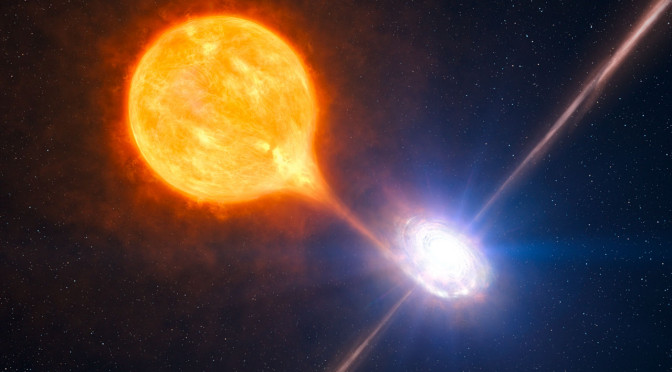We have submitted a new paper to the Astrophysical Journal that focuses on the effects of massive metal-free stellar binaries in the early universe. This is the second paper that uses the “Rarepeak” simulation that consumed over 10 million core-hours to reach a redshift of 15 (280 million years after the Big Bang), following more than 10,000 Population III stars and 3,000 galaxies with nearly 2 billion computational elements. We expect several more papers to come from this rich dataset, exploring the properties of the first galaxies and their role during the Universe’s re-emergence from the Dark Ages.
Simulations have suggested that these metal-free (Population III) stars may form in binaries and multiple systems. In this scenario, X-ray binaries will form when the more massive companion dies and leaves a black hole behind. Once the companion star progresses into the giant phase, part of its outer atmosphere will flow onto black hole, generating high-energy radiation as it accretes.
There have been previous semi-analytic and numerical work that explored the effects of these X-ray binaries on heating and ionizing the intergalactic medium (IGM). However, Population III star formation rates (SFR) are sensitive to their environment and any impinging radiation that can dissociate molecular hydrogen, which is the main coolant in metal-free gas. Using a radiation hydrodynamics simulation that captures most of the relevant physics, we were able to calculate the Pop III SFR accurately and, thus, make an estimate of the occurrence of X-ray binaries. This rate is only the first crucial step in calculating the heating and ionization rate of the IGM at these early times. We found that these rates are sensitive to the spectra of the X-ray binaries, where photons with energies just below 1 keV heat the nearby IGM the most effectively. Although, these high-redshift binaries can heat and ionize the IGM and may leave an imprint on the 21-cm observations, it has little effect on the total Thomson scattering optical depth, which CMB instruments measure to constrain the epoch of reionization.
Image credit: ESO / L. Calçada
